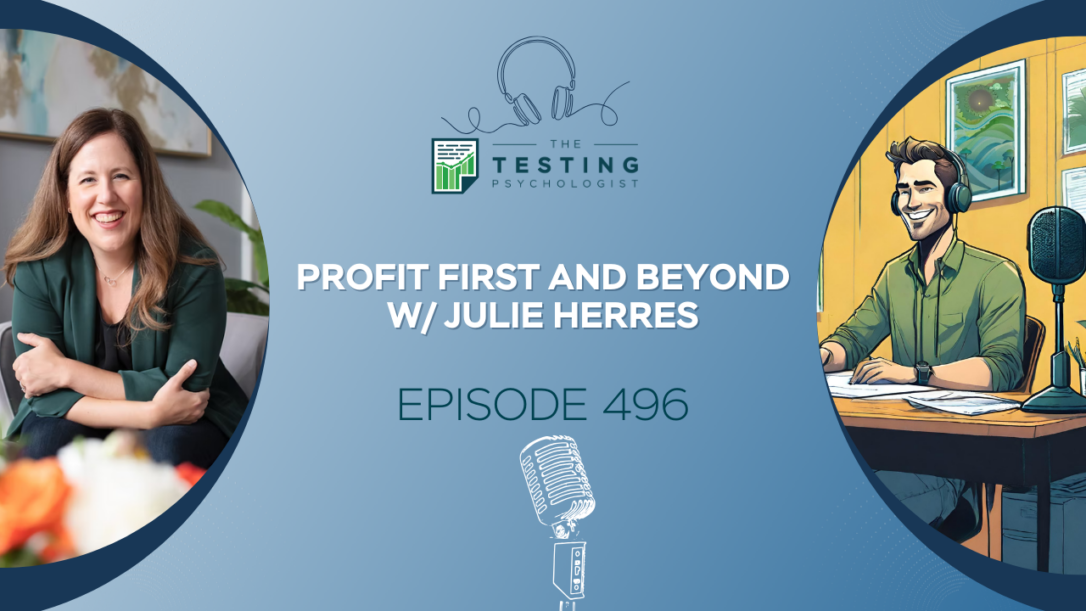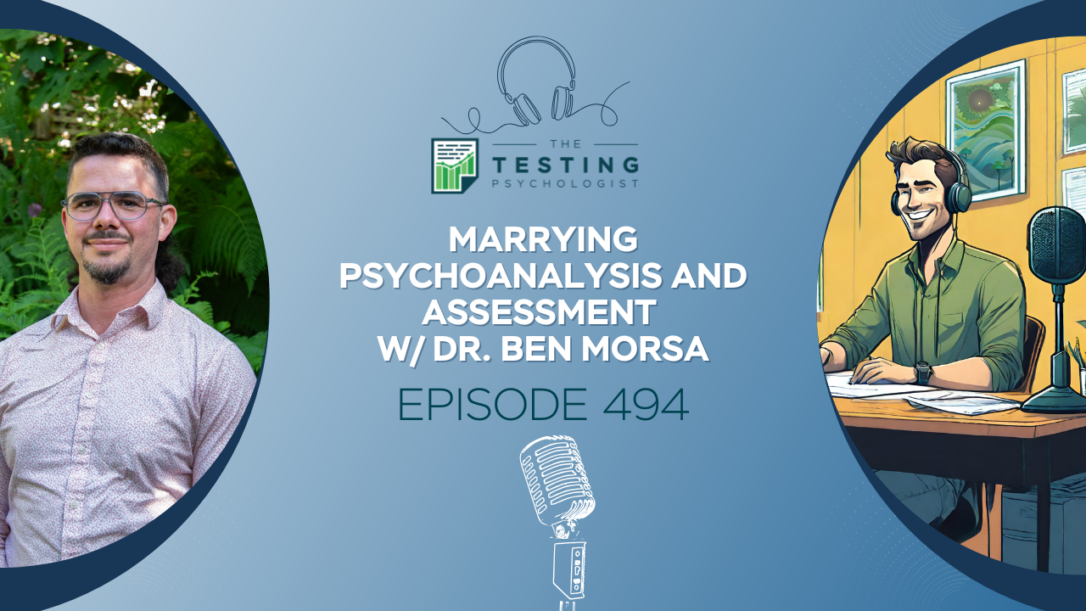[00:00:00] Hello, everyone. Welcome to The Testing Psychologist podcast. I’m your host, Dr. Jeremy Sharp, licensed psychologist, group practice owner, and private practice coach. Many of y’all know that I have been using TherapyNotes as our practice EHR for over 10 years now. I’ve looked at others, and I just keep coming back to TherapyNotes because they do it all. …
497. ADI-R and ADOS-2 as the “Gold Standards”
Today, we’re diving into an incredibly important topic in autism assessment—the role of standardized diagnostic instruments.
496. Profit First and Beyond w/ Julie Herres
Many of you have either heard of Profit First or implemented it to varying degrees.
496 Transcript
[00:00:00] Dr. Sharp: Hello everyone. Welcome to The Testing Psychologist podcast. I’m your host. Dr. Jeremy Sharp, a licensed psychologist, group practice owner, and private practice coach. Many of y’all know that I have been using TherapyNotes as our practice EHR for over 10 years now. I’ve looked at others, and I keep coming back to TherapyNotes because they do …
495 Transcript
Hello, everyone, and welcome to The Testing Psychologist podcast. I’m your host, Dr. Jeremy Sharp, a licensed psychologist, group practice owner, and private practice coach. Many of y’all know that I have been using TherapyNotes as our practice EHR for over 10 years now. I’ve looked at others and I just keep coming back to TherapyNotes because they do it …
495. Head, Heart, Hiring
Today we’re diving into one of the biggest decisions private practice owners face: when to hire help.
494 Transcript
[00:00:00] Dr. Sharp: Hello, everyone. Welcome to The Testing Psychologist podcast. I’m your host, Dr. Jeremy Sharp, licensed psychologist, group practice owner, and private practice coach. Many of y’all know that I have been using TherapyNotes as our practice EHR for over 10 years now. I’ve looked at others and I just keep coming back to TherapyNotes because they do …
494. Marrying Psychoanalysis and Assessment w/ Dr. Ben Morsa
I’m here with Dr. Ben Morsa for a fascinating discussion that combines two seemingly opposed ideas: psychoanalysis and assessment.
493 Transcript
[00:00:00] Dr. Sharp: Hello, everyone. Welcome to The Testing Psychologist podcast. I’m your host, Dr. Jeremy Sharp, licensed psychologist, group practice owner, and private practice coach. Many of y’all know that I have been using TherapyNotes as our practice EHR for over 10 years now. I’ve looked at others and I just keep coming back to TherapyNotes because they do …
493. Why Aren’t Clients Booking??
Today, we’re diving into a trend that many private practice owners are noticing: client inquiries are staying steady, but conversion rates are dropping, especially for private-pay practices.





